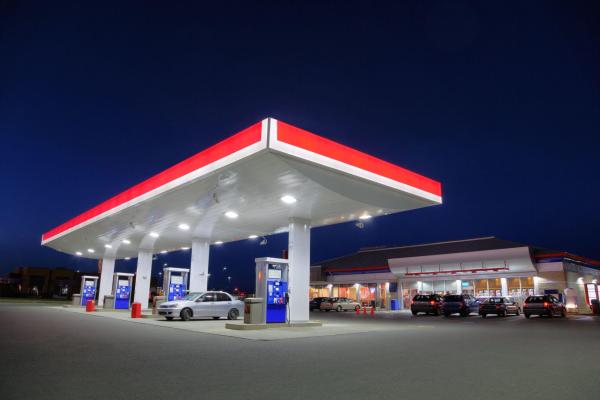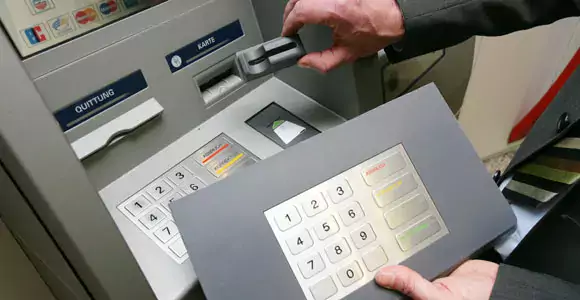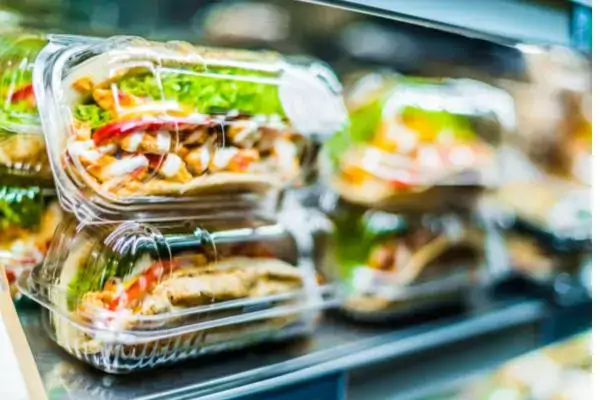I always thought it was strange that there were three gas stations on a single corner down the street from my college—until I started learning more about the convenience and gas retail industry. Around the time I saw this pattern, a game theorist in San Francisco noticed the same thing and attempted to get to the mathematical root. As Presh Talwalkar explains, this phenomenon is partially the result of population clusters, so a couple of thousand people driving to and from a college could warrant a cluster of gas stations.Here’s a brief explanation video:
The basic reasoning using the hot dog stand example in the video is this: both stands move closer to the center to capture more of a competitor’s customers. If either stand moves, they’ll lose customers. So when competing on location, everyone wants the central location. This applies to gas stations, fast-food chains, and political candidates. Here at Zenput, it was important for us to understand this game theory concept, considering we work with two-thirds of these groups. (Sorry, we don’t currently have plans to enter the political realm anytime soon!) So if moving towards the center of the geographical market is a naturally occurring trend that makes sense for a brand, it also follows that convenience store operators should do everything in their power to stand out from their competitors. In order to maintain revenue, it becomes crucial to be so in tune with your customer that you have the ability to react to changing conditions in real time.
Since Talkwar used the example of businesses on a beach, and we’re all longing for summer, I’ll use the example of the first warm day of the season. the example of businesses on a beach, and we’re all longing for summer at this point, I’ll use the example of the first warm day of the season. Maybe that day sneaks up on you, and you hadn’t yet planned an in-store beverage promotion. Not only is it warm outside, but the day falls on a weekend. This is a prime opportunity to catch customers filling up for a weekend day trip. They’ll also be filling up right across the street at your competitor’s location. You decide to take action by launching an impromptu beverage promotion.
Now you don’t have signage on the drop of a dime, but you do have some well-positioned cold-cases located at the front of your store. You decide that every store should stock up those coolers with a selection of thirst-quenching beverages, from waters and sports drinks to lemonades and iced teas. Maybe you allow store managers to institute a buy-one-get-one deal on a well-stocked beverage. And while you’re managing the cold case, you make sure to stock it with the latest healthy snacks, yogurt and to-go fruit and veggie cups—everything that’s convenient to take on the road. Now you’re responding in real time to your customers’ needs!
So to recap what has happened in this example:
- The brand is responding in real time to forces (like Mother Nature) that are beyond your control.
- The brand is taking advantage of a situation by offering a timely product assortment.
- The brand is in tune with customer needs, which may earn a future visit.
Assuming the competitor across the street didn’t have a better executed promotion, your brand has won today!

Real-Time Response Is Within Reach
The example I used above may seem out of reach to some large-scale operators. But as a practitioner of reality, I’m here to tell you that any gas station and convenience store retailer with the right tools can execute and “think on their feet” in real time.
Zenput enables that kind of response at the store level. This is what the chain of events would look like:
- Senior managers recognize a trend and make the executive decision that they want to promote certain items.
- Senior managers push out a notification that, for instance, the cold case must be stocked immediately with certain items.
- Regional and/or store-level managers receive that notification and move to arrange those items.
- To ensure compliance, store-level managers are required to take a photo of the cold case once it’s stocked.
From Zenput’s central dashboard, senior managers would immediately be able to tell if stores were in compliance with this directive because Zenput would provide data on stores that weren’t. That’s right—you can virtually check into each store! This isn’t utopia—it’s the power of real-time mobile technology. And it’s why Zenput is being used in more than 6,500 c-stores worldwide. In fact, more than 15,000 people will use Zenput today. Learn what Zenput can do to improve your store-level execution by scheduling a demo, or check out our testimonials page to learn more how our platform is helping other businesses like yours every day.
Subscribe to our blog
You are now subscribed!


